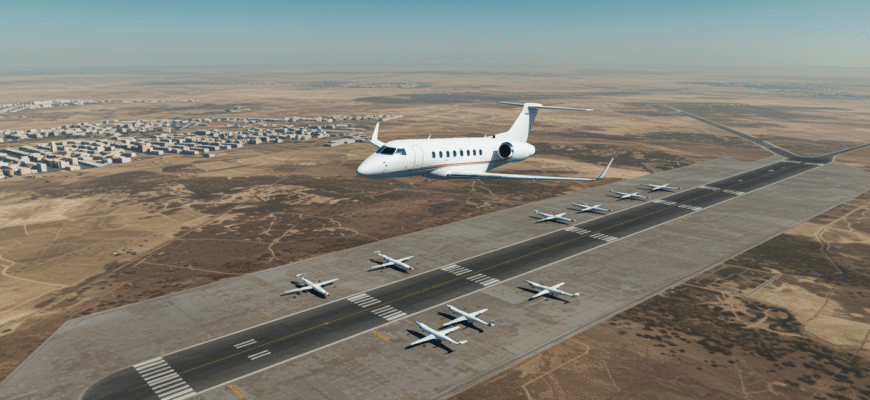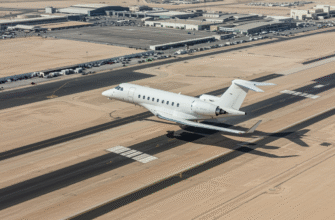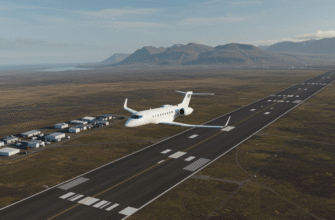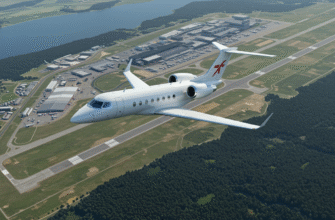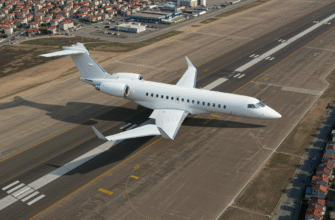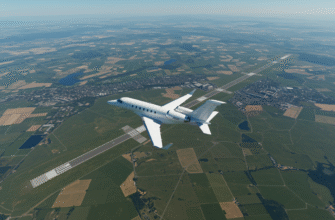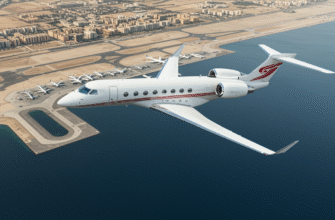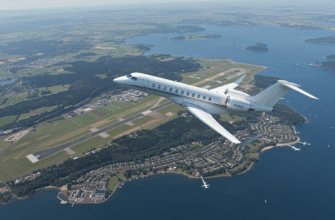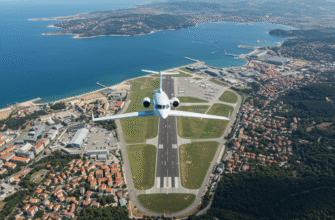Flying out of Algeria means one thing: you’re probably passing through Houari Boumediene Airport. Better known by its IATA code ALG, this isn’t just the country’s largest airport—it’s its pulse. Between the glass terminals and the faint scent of jet fuel, Algiers Airport quietly hums with stories of reunions, exile, homecomings, and politics that never really left the waiting area. Sitting just outside the capital in Dar El Beïda, the ALG Airport is the main international gateway for more than 10 million travelers each year. But what makes it more than just a crowded hub is how tightly it’s stitched into Algeria’s past and future—geographically strategic, emotionally weighty, and politically symbolic. Whether you’re flying Air Algérie back from Paris or catching a red-eye to the Gulf, there’s always something running deeper than the boarding announcements at this place. Houari Boumediene Airport isn’t just a portal out—it’s Algeria’s nerve center at 30,000 feet.
From Military Grounds To National Memory
Before terminals and duty-free shops, the land that now holds the history of Houari Boumediene Airport was a military outpost. Initially developed during French colonial rule, the site was known famously to older generations as “Maison Blanche.” The name stuck in the minds of historians, veterans, and displaced families. Back then, it functioned as an operational base and civil-military airfield for French interests in North Africa.
After Algeria gained independence in 1962, reclaiming symbols mattered deeply. The airport eventually shed its colonial name and was renamed for the country’s then-president Houari Boumediene. That act—changing a name—wasn’t cosmetic. It was a statement. A marker of turning from subjugation toward sovereignty. Today, even if you don’t notice the military design embedded in its layout or staircases, it’s there. Like when a place remembers its past quietly, through heavy walls and echoing corridors. The airport tells a layered story if you listen closely enough—a story embedded deep in Algeria colonial airport history.
Where Continents And Conflicts Meet
Zoom out on the map and it’s easy to see why ALG Airport matters beyond arrivals and departures. Algiers sits at a perfect pinch point where Europe brushes against North Africa and the Middle East begins to unfold. That spot alone makes the airport in Algiers a sought-after access point for diplomatic fly-ins, military logistics, and humanitarian transit.
The airport plays unofficial middleman to thousands fleeing or returning, especially along migrant routes stretching between the Sahel and Southern Europe. In one terminal you might hear a child speaking Berber, while down the next gate someone skims French newspapers and orders espresso. Political ideologies, personal conflicts, and family dreams flow right through the jet bridges. More than just Algeria air travel stats, ALG doubles as a barometer for the African-European connection—who’s moving, who’s stopped, and who’s turned around at security. It’s not just travel—it’s geopolitics mapped out in airport gates.
What’s Under The Hood At ALG
Not many airports in North Africa can handle widebody traffic nonstop, day or night. But Houari Boumediene Airport does exactly that, thanks to a beefy setup. Two asphalt runways, each measuring 3,500 meters, are built to accommodate everything from Air Algérie’s aging Airbus fleet to Emirates’ Boeing giants.
Here’s what else stands out:
| Feature | Detail |
|---|---|
| Runways | 2 (3,500m each), designed for widebody jets |
| Ops Hours | 24/7 operational status |
| Cargo | Temperature-sensitive storage and handling |
| Emergency Capability | Dedicated flight control and firefighting assets |
The airport’s cold-chain logistics are a standout too. In a region where sweltering heat can kill shipments fast, ALG offers rare refrigeration systems for perishables like pharmaceuticals and florals—a silent boost for regional exporters and international partners alike. Whether you’re fascinated by airport logistics in Algeria or intrigued by its adaptability, the Algiers airport facilities are designed to punch well above their weight, aiming not just at capacity but capability. From emergency landings to long-haul cargo flights, ALG isn’t just a stop—it’s a node with attitude.
- Massive 3,500-meter dual runways support round-the-clock landings
- High-end cargo control makes it a rare refrigerated hub in North Africa
- Equipped for VIP, diplomatic, and emergency movements
For now, Houari Boumediene Airport stands positioned at a unique intersection: historical and strategic, expansive and intimate. The next time you find yourself staring out its departure windows, remember—this airport isn’t just about going somewhere. It’s about where Algeria’s been, and where it’s trying to go.
Expansion Plans & Ambition: Houari Boumediene Airport Aiming for 20M Travelers
What happens when an airport decides to double its size—while barely managing what it already has? That’s the question critics and hopefuls are asking about the massive plans for Houari Boumediene Airport in Algiers. Currently handling about 10 million passengers a year, it’s betting big on 20 million by 2027. That’s not evolution—that’s a leap.
The strategy feels bold, maybe even reckless, especially given the country’s stop-start history with infrastructure overhauls. But look deeper and it’s carefully timed: two long runways already in place, a central location near Algiers, and critical hubs for Europe and Africa.
- Key player in African air traffic with two 3,500-meter runways
- Growth hinges on smoother logistics, not just ambition
- International cargo services already expanded with temp-controlled systems
If the Houari Boumediene Airport expansion work holds up—and the Algiers airport growth keeps pace—it could rewrite Algeria’s role in regional air travel. Or it could crack under bureaucracy and delays. It’s a coin toss in motion.
Air Algérie’s Central Role in Houari Boumediene Airport Growth
Air Algérie is more than a national airline—it’s a stitched-in part of daily life, a legacy carrier with decades of expectations riding on every takeoff. And yet, many of its aircraft feel older than the new terminals they fly out of. That tension defines Algiers main airline today.
Serving more than half of ALG’s departures, Air Algérie is both lifeline and limitation. It connects remote provinces, supports labor migrants, and keeps cultural ties alive. But its aging fleet and chronic scheduling inconsistencies have also dragged down the airport’s potential.
This lagging performance creates a strange duality: While the airport expands, its main carrier hesitates. Talk of investing in a stronger fleet is ongoing—but so is talk of selling off assets. Which version of Air Algérie will lead the charge?
- Main Air Algérie hubs: Algiers, Oran, Constantine
- Fleet modernization remains unfinished business
- Supports nearly all domestic and most regional connections
As the national airline of Algeria, Air Algérie can uplift or stall ALG’s next chapter. That decision isn’t just about planes—it’s about pride, politics, and practicality tangled in the same runway.
Flights from Algiers to France: A Story Written on the Departure Boards
It only takes five minutes in the departure hall to see where Algiers airport’s heart lies. Paris, Marseille, Lyon, Toulouse—French cities dominate the board. And it’s not random. Flights from Algiers to France aren’t just routes—they’re rituals.
This pattern runs deep. Families reconnecting. Expats working double shifts in Marseille. Students heading to Lille with two passports and a suitcase of homemade harissa. Algiers airport destinations map out the emotional architecture of post-colonial migration.
- High-frequency routes: Paris Orly, Marseille-Provence, Lyon Saint-Exupéry
- Secondary links to Toulouse, Nice, Bordeaux
- Dominated by Air Algérie, Air France, ASL Airlines, Transavia
What makes this more than a transport statistic is the visible intensity of the departures: tearful goodbyes, impatient customs lines, French spoken as frequently as Arabic. The French-Algerian travel story isn’t finished—it’s just boarding gate after boarding gate, every day.
Airport Experience Algeria: Bureaucracy, Nostalgia, and Checking Everything Twice
Flying through Houari Boumediene is never just a routine hop through security and onto the plane. It’s a mood—part necessity, part frustration, part memory lane. From long queues to deep scans, customs Algiers airport protocol is intense—and often personal.
Security at Algiers flights isn’t just about safety—it’s about history. Layers of national trauma from a civil war, years of instability, and paranoia built into the process. Multiple checks, shoes off, laptops out, random pat-downs that feel anything but random.
Yet there’s also this strange undertow of nostalgia. People returning “home” after twenty years abroad. Kids seeing Algeria for the first time. Grandmothers whispering prayers at boarding. Everyone seems to carry something heavier than luggage.
- Delays are common—with little real-time info
- Officials strict at arrival, especially for foreign-born Algerians
- Lines awkwardly long or eerily empty, depending on the day
What should be a streamlined process too often becomes a source of tension. But that’s part of the airport experience Algeria offers: inconsistent, emotionally charged, bureaucratic to the bone—and unforgettable once you leave.
